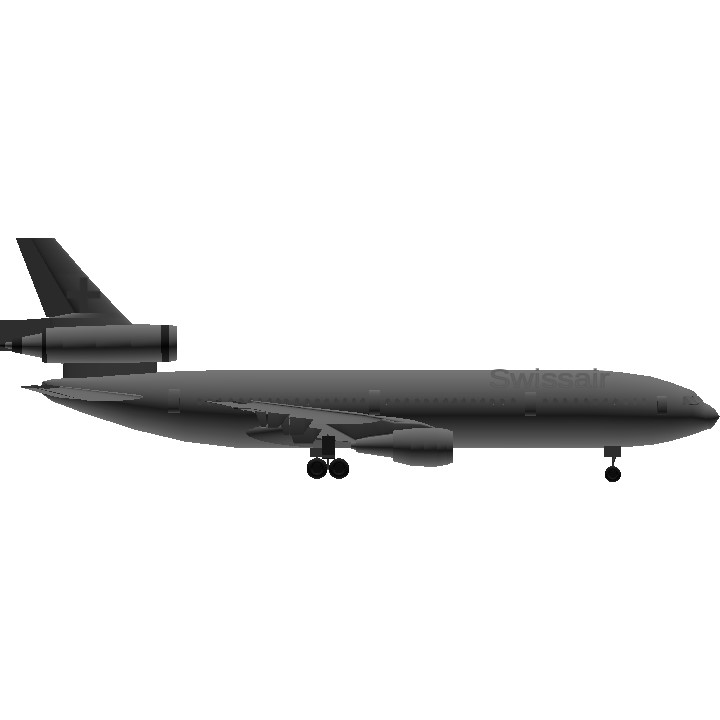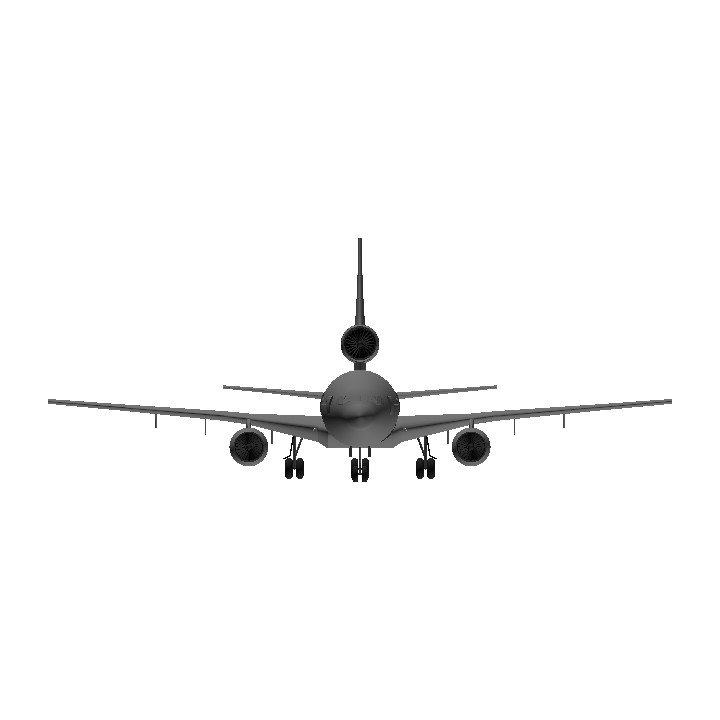The McDonnell Douglas DC-10 is an American trijet wide-body aircraft manufactured by McDonnell Douglas. The DC-10 was intended to succeed the DC-8 for long-range flights. It first flew on August 29, 1970; it was introduced on August 5, 1971, by American Airlines. The trijet has two turbofans on underwing pylons and a third one at the base of the vertical stabilizer. The twin-aisle layout has a typical seating for 270 in two classes. The initial DC-10-10 had a 3,500 nmi (6,500 km) range for transcontinental flights. The DC-10-15 had more powerful engines for hot and high airports. The DC-10-30 and -40 models (with a third main landing gear leg to support higher weights) each had intercontinental ranges of up to 5,200 nmi (9,600 km). The KC-10 Extender (based on the DC-10-30) is a tanker aircraft operated primarily by the United States Air Force.Early operations of the DC-10 were afflicted by its poor safety record, which was partially attributable to a design flaw in the original cargo doors that caused multiple incidents, including fatalities. Following the American Airlines Flight 191 crash (the deadliest aviation accident in US history), the US Federal Aviation Administration (FAA) temporarily banned all DC-10s from U.S. airspace in June 1979. In August 1983, McDonnell Douglas announced that production would end due to a lack of orders, as it had a widespread public apprehension after the 1979 crash and a poor fuel economy reputation.[2] As design flaws were rectified and fleet hours increased, the DC-10 achieved a long term safety record that was comparable to similar era passenger jets.Production ended in 1989, with 386 delivered to airlines along with 60 KC-10 tankers. The DC-10 had outsold the similar Lockheed L-1011 TriStar. It was succeeded by the lengthened, heavier McDonnell Douglas MD-11. After merging with McDonnell Douglas in 1997, Boeing upgraded many in-service DC-10s as the MD-10 with a glass cockpit that eliminated the need for a flight engi
Specifications
General Characteristics
- Predecessor McDonnell Douglas DC-10 United Airlines Battleship Grey Livery
- Created On Android
- Wingspan 157.6ft (48.1m)
- Length 181.8ft (55.4m)
- Height 61.7ft (18.8m)
- Empty Weight 143,864lbs (65,256kg)
- Loaded Weight 225,041lbs (102,077kg)
Performance
- Power/Weight Ratio 1.258
- Wing Loading 45.4lbs/ft2 (221.6kg/m2)
- Wing Area 4,958.5ft2 (460.7m2)
- Drag Points 69745
Parts
- Number of Parts 362
- Control Surfaces 5
- Performance Cost 1,741





